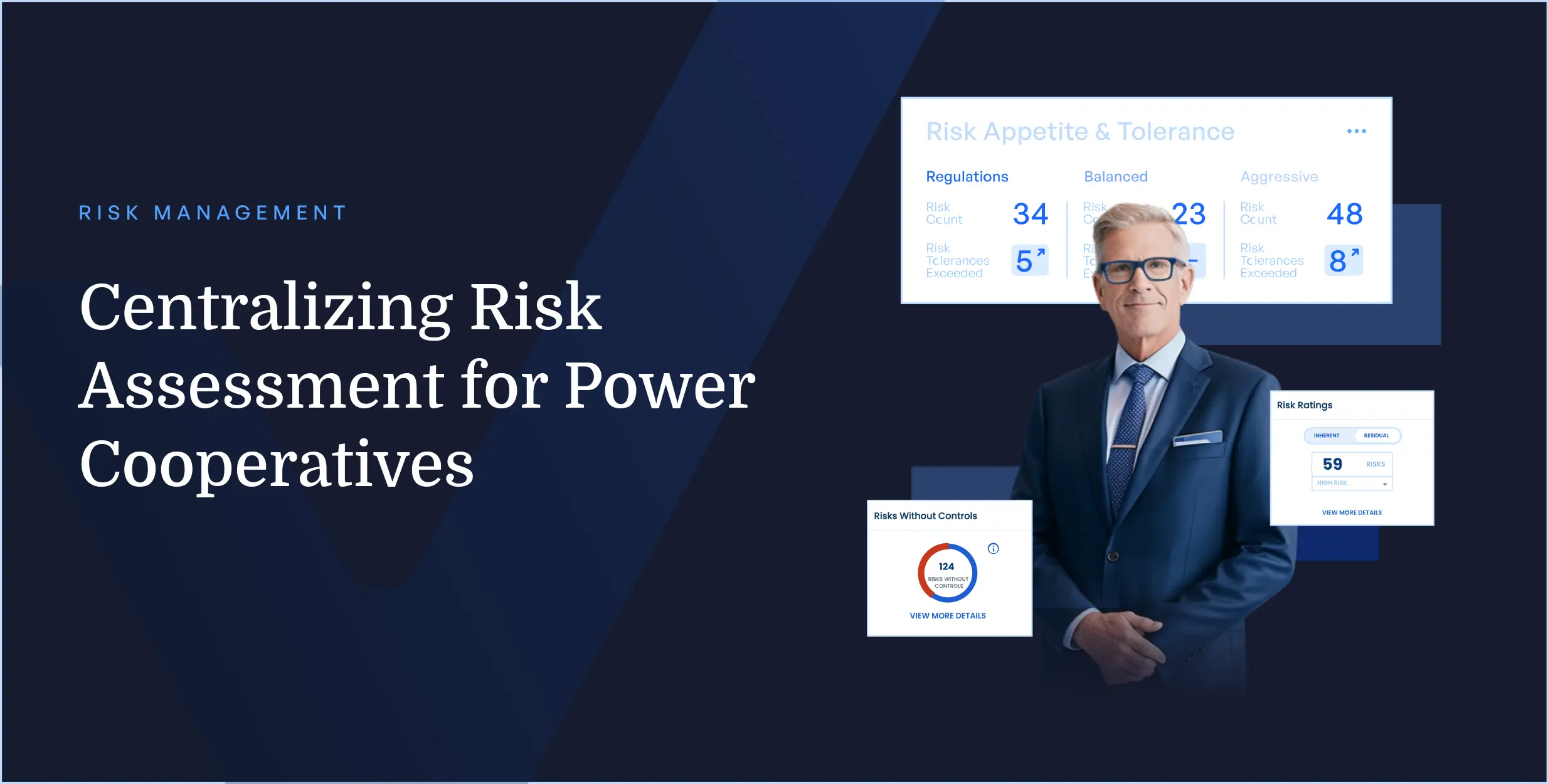Centralizing Risk Assessment for Power Cooperatives
Power cooperatives in North America are highly regulated organizations under the oversight of federal and state regulatory bodies such as the Public Utility Commission, NERC, FERC, Department of Licensing and Regulation, and others.

Each of these regulatory bodies has its own set of rules and regulations. However, one common requirement across all regulatory bodies is that they expect power cooperatives to be resilient to risks. Power cooperatives are mandated to establish and maintain a proactive risk management system throughout the organization.
The Risk Officer plays a pivotal role in establishing and efficiently managing risks within any organization, and this holds true for a power cooperative as well.
Risk assessment demands extensive collaboration and control over shared information. However, the overuse of traditional communication tools, like emails and phone calls, while accessible, is not scalable and lacks centralization.
Modern risk leaders need contemporary solutions to address the challenges associated with centralization in risk assessment processes.
Challenges
As a risk leader, you may encounter various daily challenges, but some of the most significant issues stemming from a decentralized risk management system include:
- You find yourself frequently traveling to various locations to coordinate with risk management stakeholders who are dispersed across different locations and service centers.
- Your current approach involves using word documents, spreadsheets, and shared drives to handle risk-related tasks and documentation, which leads to significant process inefficiencies and delays.
- In your communication with stakeholders, you rely heavily on phone calls and emails, resulting in a lack of comprehensive visibility into employee accountability.
- You also spend days and even months collecting data on risk issues, resolutions, and assessment reports lacking customization capability.
Solution
VComply is a unique platform that enables you to onboard stakeholders from all locations, creating a central virtual space for risk assessment, information sharing, and document management, eliminating the need for manual processes.
Key features for facilitating centralized risk assessment include:
Steps to follow
As the risk officer in a power cooperative, you can take the below steps to simplify and centralize the risk assessment process.
Step 1: Onboard stakeholders to create a central risk space
Effortlessly onboard your risk team members within the VComply platform using only their email addresses.
Assign role-based work permissions and control information access to manage risk assessment activities across all stakeholders effectively.
Create user groups for enhanced collaboration and establish a unified space to monitor individual responsibilities.
Step 2: Create location-specific responsibility centers
Establish responsibility centers tailored to specific locations or service stations.
Associate specific users with their designated responsibility centers.
Create related risk assessment tasks and promote collaboration across the entire organization.
Step 3: Centralize risk assessment through risk workroom
You will no longer need to share information through emails and phone calls. When you identify and register a risk in VComply, a dedicated risk workroom is automatically generated for that specific assessment.
Stakeholders can track the progress of the assessment and exchange information within the workroom. This centralizes information and eliminates the need for time-consuming meetings.
Step 4: Collaborate through Discussion Board
In the risk workroom, you and your team can share feedback and comments through the ‘Discussion Board.’ The assignee of the risk assessment will receive real-time updates on all comments and feedback.
Step 5: Automate task and activity reminders
Notifying individuals about their risk-related tasks is now easier than ever.
Once a risk workroom is created, all relevant stakeholders receive real-time email and platform notifications.
Automatic alerts are consistently sent to all stakeholders until the expected work is completed. This significantly reduces the likelihood of missed communication.
Step 6: Share files and folders through the central space
Create customized folders for specific risks and centralize document sharing with an easy upload option.
Once the files are uploaded, all stakeholders can access them from anywhere, at any time, eliminating information gaps and reducing the risk of information leakage.